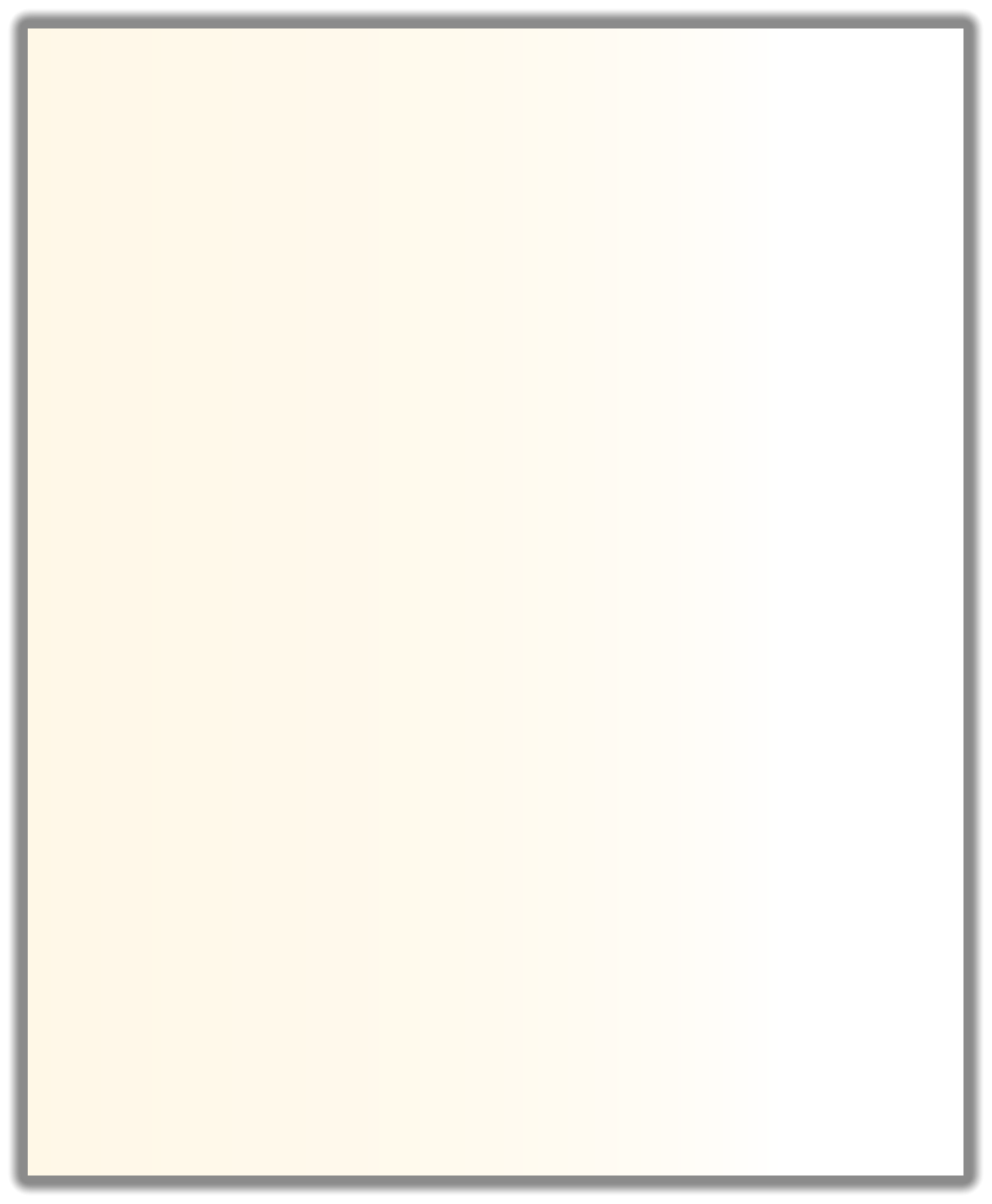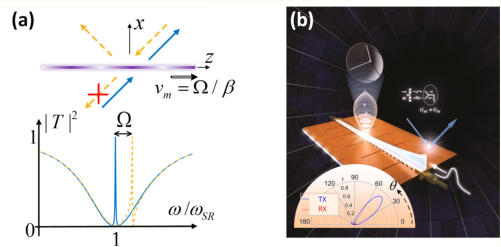




RESEARCH HIGHLIGHTS (7/8)

Breaking reciprocity for optical radiation, scattering and absorption
Radiation and scattering phenomena are ubiquitous in optics, yet they are fundamentally limited by time-reversal symmetry and Lorentz reciprocity.
Radio- and nano-antennas are forced to transmit and receive with the same efficiency to/from the same direction. Thermophotovoltaic systems
are bound to emit towards the source as well as they absorb from it, limiting their overall efficiency. Metasurfaces and gratings also obey similar
symmetry requirements: if a wave A diffracts into a wave B with certain efficiency, then the same coupling is expected from B to A.
In recent years, there has been significant interest in temporally modulated systems that realize non-reciprocal transmission in optical waveguides, to
realize integrated nanophotonic isolators and circulators [1],[2]. These systems have to rely on high quality factors to work efficiently and with
small footprints, but unfortunately radiation and scattering are relatively low-Q phenomena, and therefore breaking reciprocity in these systems
using time-modulation is inherently challenging. By taking advantage of the natural filtering properties of the light cone, in recent papers we
showed that it is possible to efficiently break reciprocity in radiation, scattering and absorbing systems using weak and slow temporally modulated
traveling-wave circuits [3]-5]. More specifically, in [3] we showed that it is possible to induce a nonreciprocal electromagnetic induced transparency
window in a suitably designed time-varying metasurface, enabling a plane wave coming from certain direction to be fully transmitted, while a
plane wave coming from the opposite direction is fully reflected, as illustrated in panel (a). The space-time modulation creates an effective sense of
motion for the antenna, at the velocity of the modulation signal, but it yields multiple harmonics of Doppler shift, thus it reminds but it is also
distinct from an actual mechanically moving medium. In [4], we demonstrated and measured remarkably different radiation patterns in
transmission and reception for a temporally modulated leaky-wave antenna, designed to directively transmit towards a desired direction, but at the
same time not being prone to listen to echoes and reflections, as illustrated in panel (b). The antenna was designed based on a coplanar line
periodically loaded with slits in its ground plane for controlled radiation, and by voltage varying capacitors to enable temporal modulation. The
modulation signal was injected through the same port as the RF signal and propagated on the same transmission line but outside the light cone,
therefore did not couple to radiating waves. These findings prove that it is possible to break reciprocity constraints in open systems using weak
forms of spatio-temporal modulation, exploiting the natural filtering properties of free-space, with important implications from radio-wave
communications and nanophotonics to energy harvesting and sensing.
[1]
Z. Yu and S. Fan, Nat. Photon. 3, 91 (2009)
[2]
D. L. Sounas, A. Alù, ACS. Photon. 1, 3, 198-204 (2013)
[3]
Y. Hadad, D. L. Sounas, A. Alù, Phys. Rev. B 92, 100304 (2015)
[4]
Y. Hadad, J. C. Soric, A. Alù, Proc. Natl. Acad. Sci. USA, 113 3471-3475 (2016)
[5]
D Correas-Serrano et al., IEEE AWPL 15, 1529-1532 (2016)






![(a) Illustration of nonreciprocal electromagnetic induced transparency in a metasurface modulated at temporal and spatial frequencies , , , enabl ing the creation of a free - space one - way mirror . (b) Illustration of a nonreciprocal leaky - wave antenna designed to transmit but not receive . Remarkably different radiation patterns in TX and RX were measured (inset) . Similar concept s can be translated to infrared and optical frequencies in order to increase the efficiency of energy harvesting system s [5] .](index_htm_files/39795.png)


















